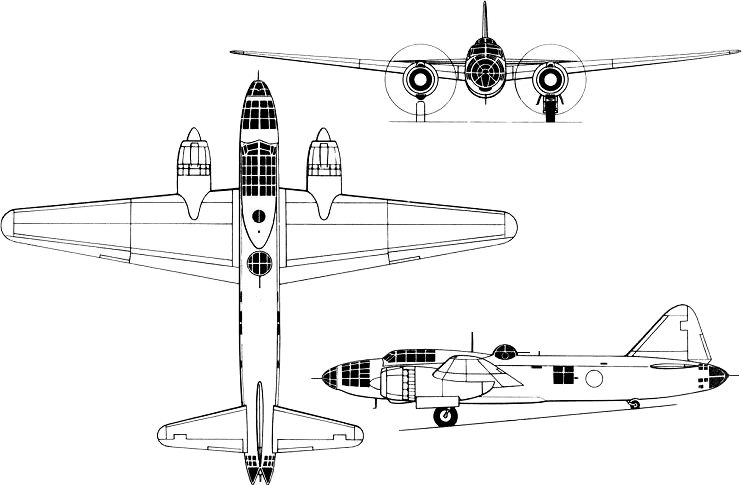
The G4M's single outstanding success was achieved at the start of the Pacific War when, on 10 December 1941, only three days after Pearl Harbor, G3M Nell's and G4Ms of the 22nd Air Flotilla sank two British capital ships - the new battleship Prince of Wales and the old battlecruiser Repulse - off the coast of Malaya. This action - sometimes referred to as 'The Battle of the Gulf of Siam' - is more generally known as 'The Destruction of Force Z'.
Prince of Wales and Repulse were the first capital ships
ever to be sunk while at sea and free to manoeuvre. In fact, only three
other dreadnoughts were ever sunk by air attack under such conditions -
the Japanese giants Yamato and Musashi which were destroyed
by US carrier aircraft towards the end of the war,![]() and
the Italian fast battleship Roma which was attacked (immediately
after the Italian surrender) by German land-based aircraft using radio-controlled
glider-bombs.
and
the Italian fast battleship Roma which was attacked (immediately
after the Italian surrender) by German land-based aircraft using radio-controlled
glider-bombs.
The first attacks on Allied forces to be made following the Guadalcanal landings were carried out by G4Ms flying from Rabaul. An attack on the US transports by 26 Betties was to demonstrate to Allies and Japanese alike the vulnerability of the G4M to anti-aircraft fire. At least 17 Betties were shot down. One aircraft damaged by gunfire made a suicide crash on the transport George F. Elliott. The resulting fire destroyed the ship - this was the only damage inflicted by Japanese air attacks in reaction to the Allied landings.
G4Ms operated throughout the six months of fighting on Guadalcanal, suffering heavy losses. By early 1943 the Japanese Navy had developed new techniques for night torpedo attack. These were put into effect on the night of 29/30 January 1943 in the Battle of Rennell Island, in which Betties torpedoed and sank the heavy cruiser Chicago. G4Ms repeatedly harassed US task groups in night attacks from this time until almost the end of the war, occasionally inflicting heavy damage - for example in February 1944 when a Betty torpedoed the Essex Class carrier Intrepid after Task Force 58's raid on the Japanese base of Truk in the Caroline Islands.
The G4M had been designed to meet a very demanding Navy specification of 1938. Mitsubishi repeatedly advised the Navy that a four-engined design would be preferable, but the Navy insisted on the restriction to two engines. The G4M1 flew its first missions in China in May 1941. Engine-power and fuel capacity were increased with the G4M2, the version produced in the greatest numbers. In the G4M3 the balance of the design was dramatically changed, with full protection being provided and fuel capacity being drastically reduced.
In 1945 specially-modified G4Ms were employed to carry the Ohka rocket-propelled piloted bomb. This development was in general a disastrous failure, since the modified G4Ms when carrying the Okha were hopelessly vulnerable to fighter attack - although if the G4M succeeded in launching the Okha within range of allied ships the weapon then often proved devastating.
Total production of the G4M was 2,479 - a remarkably high figure for
a Japanese medium or heavy bomber.
![]()
